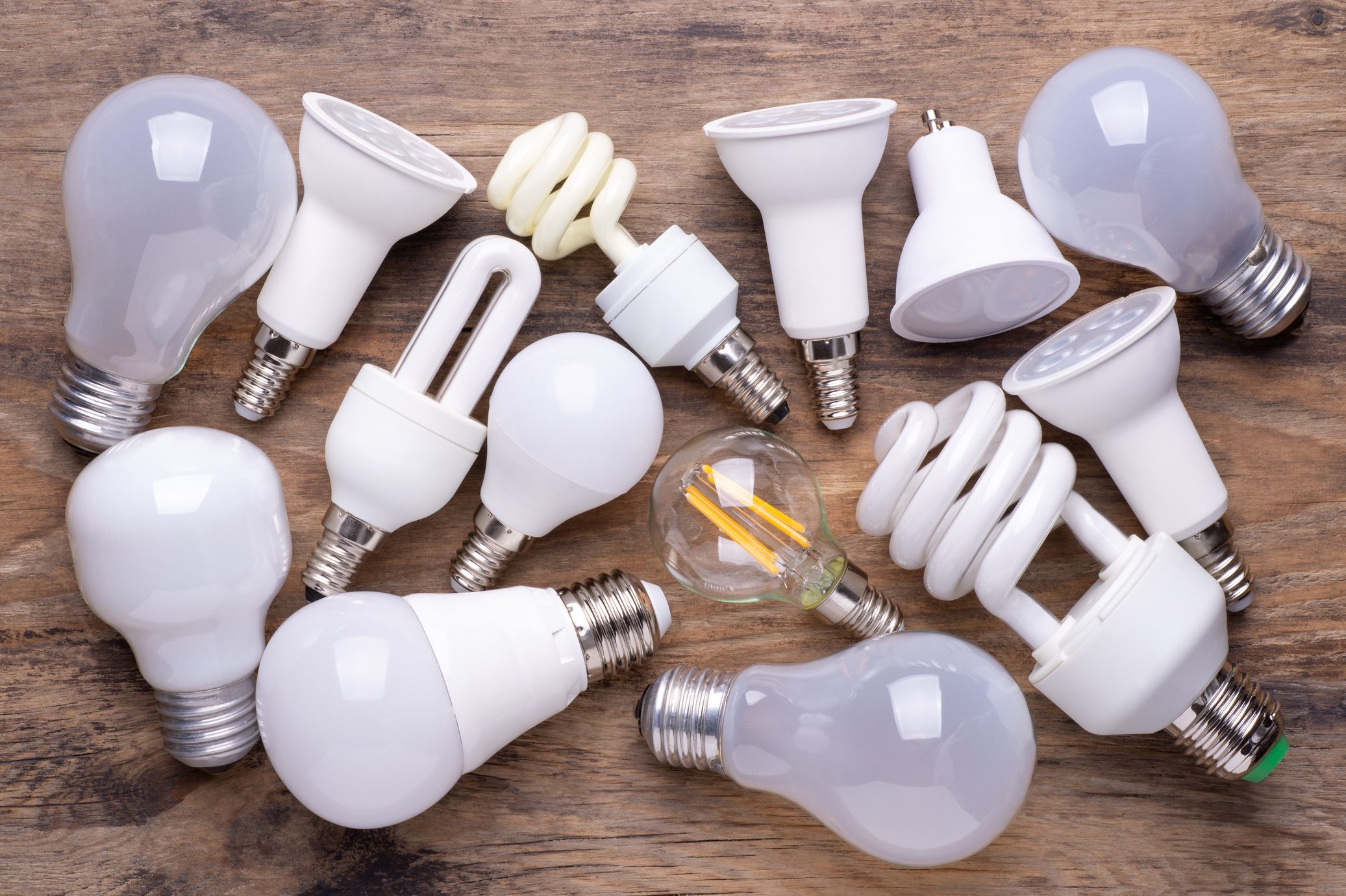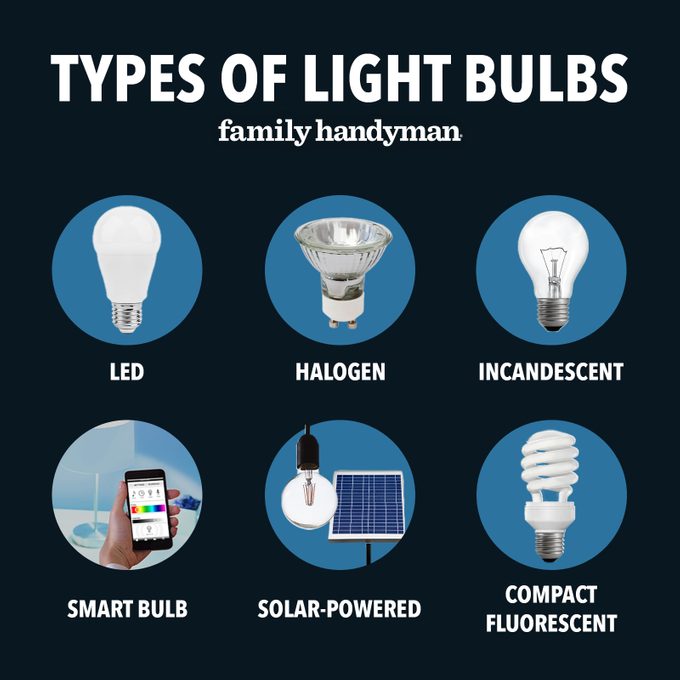LEDs are in. Incandescents are out. Here's everything else you need to know about choosing light bulb types for your home.
Our editors and experts handpick every product we feature. We may earn a commission from your purchases.Learn more.


LEDs are in. Incandescents are out. Here's everything else you need to know about choosing light bulb types for your home.
Our editors and experts handpick every product we feature. We may earn a commission from your purchases.Learn more.
The first electric arc light bulbs were made in the 1830s, before the inventors Nikola Tesla and Thomas Edison were born. And although light bulbs would change the world, it took a while for them to become commonplace. A century ago, only half of the homes in the United States had electricity. From then until the 1980s, choosing which bulb to buy for your lamp was simple, because there was only one choice — the traditional incandescent bulb. Today that old standard is on the way out, complicating the decision of which light bulb type to buy.
Don’t worry. We’re here to help crack the modern light bulb code.
On This Page
Incandescents still make up about one-third of light bulb sales in the U.S., but they’re being phased out for more efficient options.
“It is rare that clients request incandescent bulbs now because the LED bulbs have become more affordable, higher quality and we have adapted to seeing them in most places,” says Jennifer Johnson, owner of The Light Center in Fort Collins, Colorado.
According to the U.S. Environmental Protection Agency (EPA), 90 percent of the energy used by most incandescent bulbs ends up wasted as heat, leaving only 10 percent to deliver actual light. “We were essentially lighting homes with small heaters,” says Enesta Jones of the EPA.
The evolution of LED technology changed that. LEDs are about 90 percent efficient, and over the last decade their price has dropped by nearly 90 percent to around $5. That means each bulb pays for itself in energy savings after a few months.
LED technology is also progressing rapidly. Smart bulbs create moods in a room. Color customization throughout the day supports circadian rhythms. LED fixtures provide creative and discrete designs that integrate into cabinets and furniture. Of course, switching to LEDs is also an easy step for homeowners to reduce energy use.
“The bottom line is that LED technology is the better option for lighting, no matter your choices at the store,” says Jones.
“If every American home replaced their five most frequently used light fixtures or the bulbs in them with ones that have earned the Energy Star, we would save more than $5 billion each year in energy costs and prevent greenhouse gases equivalent to the emissions from more than six million cars.”
While LEDs are today’s darlings, there are other options on the shelves. Here’s how to find light bulbs to fulfill your home lighting needs.

There are four main types of light bulbs for home lighting:
Within the world of LEDs, there are a couple of specialty products gaining steam:
When choosing a bulb, here are a few things to keep in mind:
The EPA compiled this interactive guide to choosing bulbs, including how much light is needed and what color you may prefer.
There’s no industry standard set of light bulb sizes and bases, so there are hundreds of variations. Sizes are indicated by a letter-number combination, like A19, T10, B10, MR16, etc. The bulbs that fit most table and floor lamps are called A-lamps, with an Edison (E26) base. Candelabras use E12s.
To determine which one you need, look at your fixture. If you have an old bulb, bring it to the store to match the size and base.
Everyone’s preferences differ, so there’s no one “best bulb.” However, for most situations our experts recommend a high-quality LED bulb, adjusted to your preferred color temperature and purchased from a reputable company.
“The number one thing to do when shopping for lighting is to first look for the Energy Star label,” says Jones. Energy Star bulbs are independently tested and certified to make sure they perform as promised. “[It] works as a seal of approval for LED bulbs, to indicate they save energy, deliver on brightness, and work the way you expect light bulbs should,” Jones says.